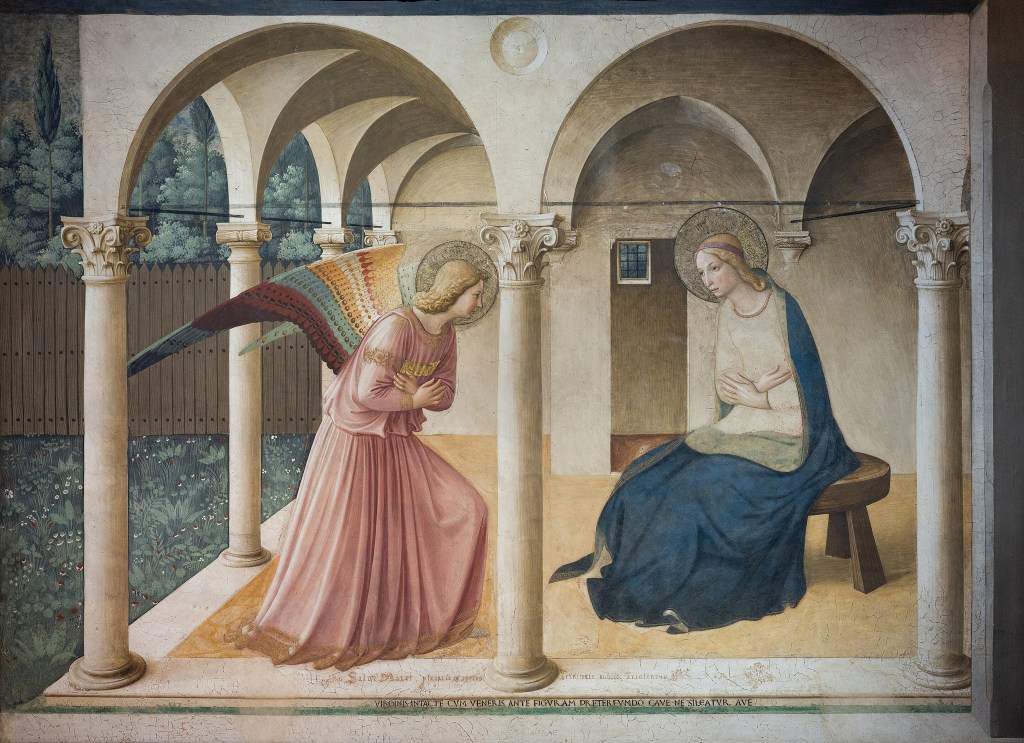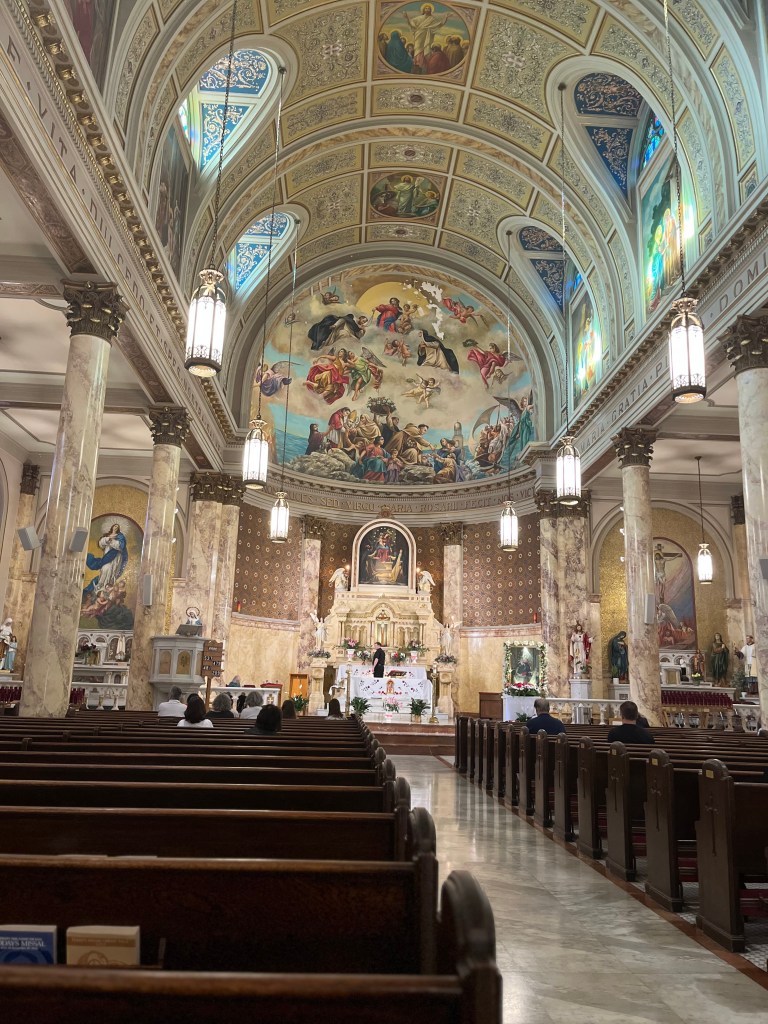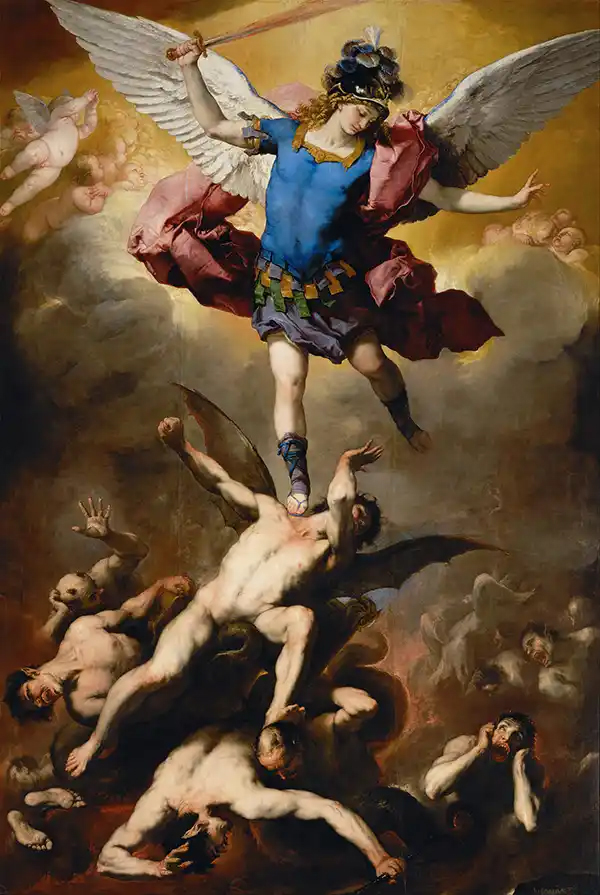This fall, Florence will celebrate the work of Fra Angelico with a major retrospective—the city’s first in seventy years—at both the Palazzo Strozzi and the Museo di San Marco, opening on September 26. For the occasion, Ben Street writes about the resonance of Fra Angelico’s work in modern and contemporary art.
In September 1968, the Metropolitan Museum of Art, New York, staged its exhibition The Great Age of Fresco: Giotto to Pontormo. An Exhibition of Mural Paintings and Monumental Drawings. Two years before it opened, devastating floodwaters had surged through many Italian cities, causing extensive damage to historical sites and killing over 100 people. The wall paintings on show at the Met had been salvaged from ancient buildings whose structures were sodden with rising water. What this delicate process of removal and remounting had revealed were the underdrawings, or sinopias, that had been until then hidden beneath layers of plaster and pigment, ostensibly forever. The revelation of these huge drawings, and their display in New York, obliged a reappraisal of what Renaissance painting was—and what contemporary art could be. In a 2009 essay for October, “Why Would Anyone Want to Draw on the Wall?,” conceptual artist Mel Bochner looked back at his encounter with these works at the Met and answered his own question by declaring that large-scale wall work could “negate the gap between lived time and pictorial time.” The problem of painting in the late ’60s—its apparent inability to speak beyond itself, to rub up against the issues of its moment—found an unlikely solution in centuries-old works of art, for which that gap barely existed.
It was easy enough to pass by Fra Angelico’s work in the 1968 exhibition. Compared to the huge sinopias of his fellow Florentines Andrea del Castagno and Paolo Uccello, his contribution was small: three or four sinopias, saved from sites in and around Florence just after the floods. One of these, a Virgin and Child in rust-red pigment (the term “sinopia” refers to that material, almost always used in underdrawings), charms for its repeated attempts to nail the crook of the baby’s elbow. It has a tentativeness absent from the artist’s completed works. Yet Bochner’s claim that Renaissance wall painting could suggest “a new site, a new scale, a new sense of time” for contemporary art resounds in those of Angelico’s frescoes that remain in their original locations more strongly than in the work of any of his peers. You can see this for yourself: Step off the street in Florence and into the whitewashed cloister of the Dominican monastery of San Marco. Ascend the steep stairs to the top floor, where long corridors are punctuated by arched doorways. Within each of these is a monk’s cell containing a single fresco by Angelico. Each is an argument in paint for the interdependence of life and art. Each says: What gap?
Take this one. An angel with rainbow wings stands before a woman who, like her, is pale, thin, and haloed. Her arms folded in front of her, with right hand up and left hand down, the angel is silently communicating something, announcing something. The woman (a girl, really) echoes that arms-folded gesture, her right fingers holding open the book she’s been reading up to this moment. Those up-and-down gestures condense the subject of the painting: It’s a meeting of worlds, the up and the down, immortal and mortal, heaven and earth. Held still in front of the bellies of the two figures, the gesture also anticipates what’s coming next, namely the birth of a child, who’ll be held in a similar gesture, as babies tend to be. The painting’s subject is the annunciation of the birth of Jesus to Mary by the Archangel Gabriel, but none of Angelico’s presumed viewers would need that story spelled out. It’s entry-level Christian narrative, familiar to even a novice Dominican. Instead, Angelico leans into the implications of the story. That cloister you passed through on the way here, designed by the architect Michelozzo in the late 1430s—contemporary, that is, with Angelico’s fresco—is clearly the model for the painting’s plain architectural interior. The cool Tuscan light that picks out the folds of Gabriel’s garment is the same light illuminating you. And a robed figure behind Gabriel—a man with an alarming gash in his head, the blood dribbling down—is a modern figure, inserted into the ancient narrative: Saint Peter Martyr, a Dominican saint murdered a century before the painting was made. The complex temporality of the work makes demands on its viewers even now. What it means is that the painting is both about the interaction of heaven and earth and is that. Literally embedded in the walls of the monastery, the painting collapses real and painted space, lived and pictorial time: It extends art into life, and vice versa.

Even the name of Fra Angelico has something of the divine about it, yet it wasn’t a name he knew. He was born Guido di Pietro in the Mugello valley north of Florence, sometime toward the end of the fourteenth century. His first recorded paintings coincide with the beginning of his life as a monk; it’s impossible, then, to separate his artistic production from his spiritual life, as the posthumous name “Fra Angelico” (meaning “Angelic friar,” a name that emerged within a decade or so of his death) reflects. By the middle of the nineteenth century, critics such as John Ruskin were asserting (without evidence) that his “purity of life . . . and natural sweetness of disposition” accounted for the spiritual sincerity of his art. In 1982, he was beatified by Pope John Paul II—the only artist thus far to have received that honor, making him the default patron saint of artists. That status provided a framework, perhaps misleading, for understanding his art as a direct expression of spiritual purity. It also set him apart from his contemporaries, many of whom, such as Donatello and Piero di Cosimo, were quite happy to produce images of Roman gods and goddesses for private patrons, something it’s impossible to imagine Angelico doing.
This and other qualities make him an anachronistic figure, whose work never quite shook off the decorative Gothic elements and serene abstraction of his earliest work, from the 1420s. Well into his career he was making ethereal paintings with backgrounds of pure gold leaf while his peers had moved on to more naturalistic settings and anatomies. The 2025 exhibition at the Palazzo Strozzi and the Museo di San Marco, the first in Florence in seventy years, reiterates the case for Angelico’s place within the constellation of Renaissance household names, showing newly restored paintings and reuniting altarpieces dismantled in the nineteenth century. Yet Angelico resists such company. His work troubles the clean break between medieval and modern worlds. And that generative anachronism accounts for his reappraisal in the work of artists centuries after his death in Rome in 1455.
https://gagosian.com/quarterly/2025/08/20/essay-fra-angelico/










